Choosing the right type of carpet is important for commercial spaces as it can significantly impact the environment’s overall look, comfort and durability.
When selecting a carpet, consider factors such as usage, traffic and aesthetics to ensure the best fit for your space. Proper selection enhances the visual appeal and contributes to the longevity and functionality of the flooring.
In this article, we will explore the various types of carpet materials, their benefits and how to choose the right one for your commercial space.
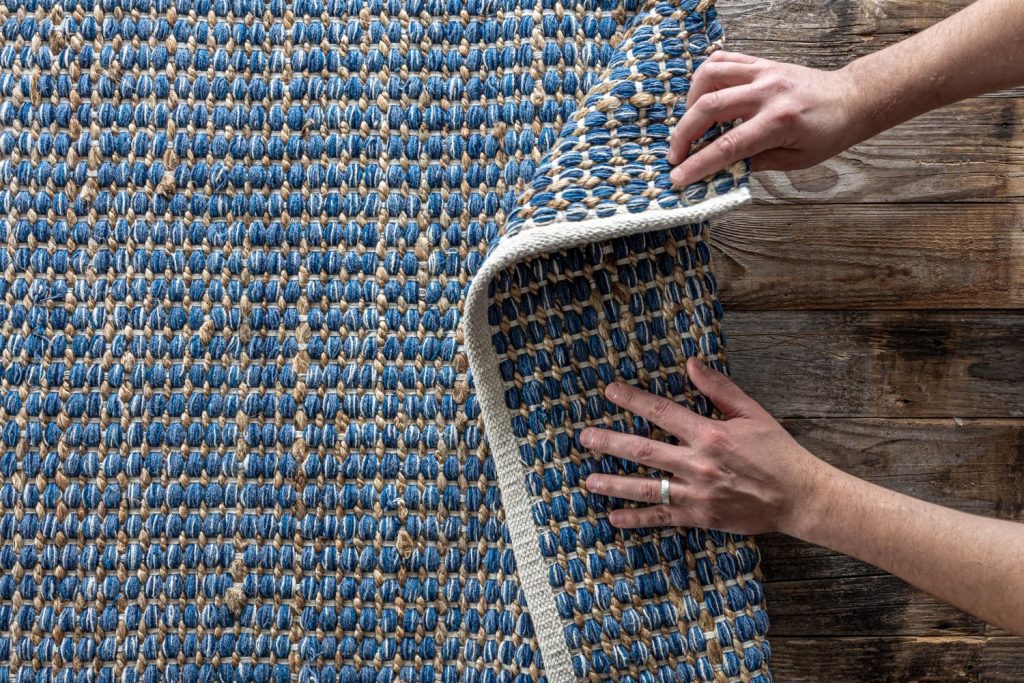
Understanding Carpet Terms
Understanding carpet terms is crucial for making an informed decision when selecting from the various types of carpet available.
Knowing these terms can help you choose a carpet that meets your specific needs and preferences, enhancing the functionality and aesthetics of your commercial space.
1. Fibre
Fibre refers to the material used to make the carpet. Common types of carpet fibres include nylon, polyester, olefin and wool. The fibre affects the carpet’s durability, stain resistance and feel underfoot.
For commercial spaces, choosing the right fibre is essential because it determines how well the carpet will withstand heavy foot traffic, spills and overall wear and tear.
2. Pile
Pile refers to the visible surface of the carpet, consisting of loops or cut ends of the yarn. The pile height and density influence the carpet’s texture, appearance and performance.
Piles is important for commercial spaces because it impacts the carpet’s ability to hide footprints and dirt and its overall durability.
A well-chosen pile can enhance the look of a space while providing the necessary resilience for heavy use.
3. Density
Density measures how closely the fibres are packed together in the carpet. A higher density indicates a more durable and resilient carpet, which is important for commercial spaces that experience heavy use.
Dense carpets maintain their appearance longer and provide better cushioning underfoot. When choosing a carpet, considering density ensures you get a product that will last and perform well in demanding environments.
4. Pad
Pad, also known as carpet underlay or cushioning, is the layer beneath the carpet that adds support and comfort. It affects the carpet’s feel, insulation properties and noise reduction capabilities.
A good quality pad extends the carpet’s life by absorbing impact and reducing wear. For commercial spaces, selecting the right pad is important to enhance comfort for employees and clients, as well as to improve the carpet’s overall performance.
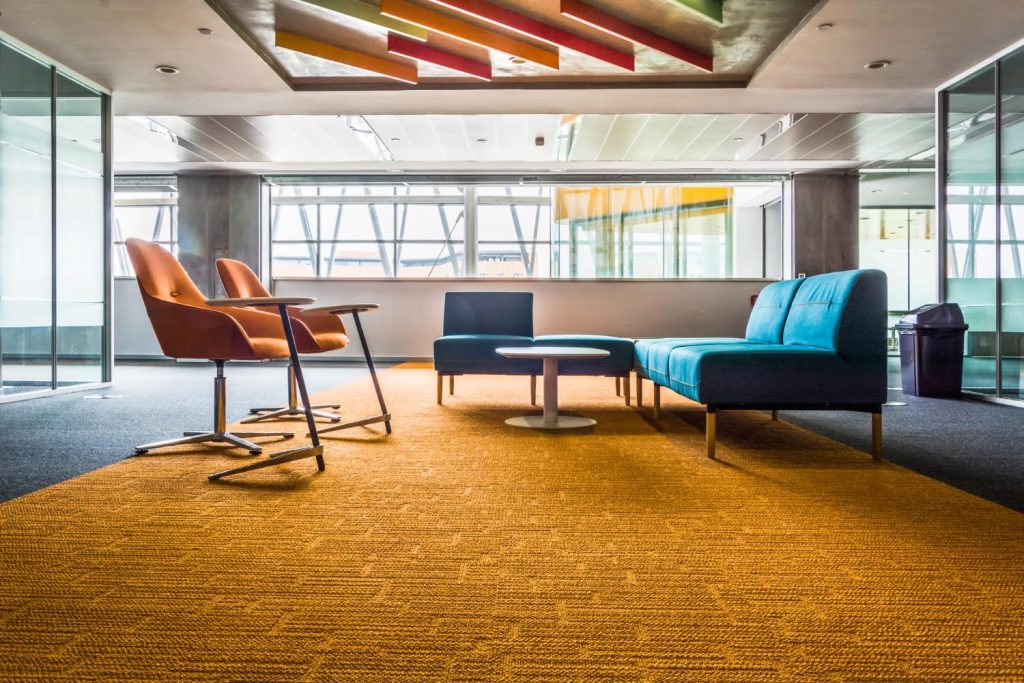
8 Types Of Carpet Fibres
Each fibre type offers unique characteristics, benefits and drawbacks, so it’s important to understand these differences before making a decision.
Below, we explore eight common carpet fibres to help you choose the best option for your needs.
1. Nylon
Nylon is a synthetic fibre and one of the most popular carpet types due to its exceptional durability and resilience. Known for its ability to withstand heavy foot traffic, nylon carpets are an excellent choice for high-traffic commercial areas.
Nylon is also popular because it is easy to clean and maintain, resisting wear, mold, mildew and rot effectively. Although it can be more expensive than other synthetic fibres, its longevity and performance justify the cost.
Nylon carpets are also easy to dye and hold their colour well, ensuring they maintain a vibrant appearance over time.
Ideal Use Cases:
- Offices
- Hotels
- Commercial corridors
2. Polypropylene (Olefin)
Polypropylene, also known as olefin, is a synthetic fibre with moisture and stain resistance, making it a practical choice for commercial spaces prone to spills and damp conditions.
Unlike nylon, olefin is less resilient, meaning it can flatten and wear out more quickly under heavy foot traffic. However, it is highly resistant to chemicals, mildew and fading, ensuring that it maintains its appearance in harsh environments.
Polypropylene carpets are generally more budget-friendly, providing an economical option without sacrificing essential qualities like stain resistance. They are also easy to clean, often requiring simple vacuuming and spot treatment.
Ideal Use Cases:
- Basements
- Commercial entryways
- Outdoor areas
3. Polyester
Polyester is a popular synthetic fibre known for its vibrant colour options and excellent resistance to water-based stains.
Polyester carpets, often chosen for their luxurious softness and comfort underfoot, are an appealing option for low-traffic commercial areas.
One of polyester’s key advantages is its eco-friendliness. Many polyester carpets are made from recycled materials, adding to their appeal for environmentally conscious businesses.
While it is less durable than nylon, making it more suitable for areas with lighter foot traffic, it offers a more affordable price point. Polyester is easy to clean and maintain, requiring simple vacuuming and occasional deep cleaning to keep it looking fresh.
Ideal Use Cases:
- Low-traffic office areas
- Meeting rooms
- Waiting areas
4. Acrylic
Acrylic is a synthetic fibre that mimics the look and feel of wool, offering a more affordable alternative for those seeking the luxurious appearance of natural fibres.
It is known for its resistance to moisture, mildew and fading, making it suitable for commercial spaces that may experience occasional dampness or exposure to sunlight.
Acrylic carpets are easy to clean and maintain, requiring simple vacuuming and spot treatments to stay in good condition. However, they are less durable than nylon and can be prone to pilling and fuzzing over time.
Despite this, acrylic carpets provide good colour fastness and a soft texture, making them a suitable option for light-traffic commercial areas or decorative rugs.
Their blend of aesthetic appeal and practical benefits makes acrylic a viable choice for businesses seeking a balance between cost and appearance.
Ideal Use Cases:
- Light-traffic commercial areas
- Decorative rugs
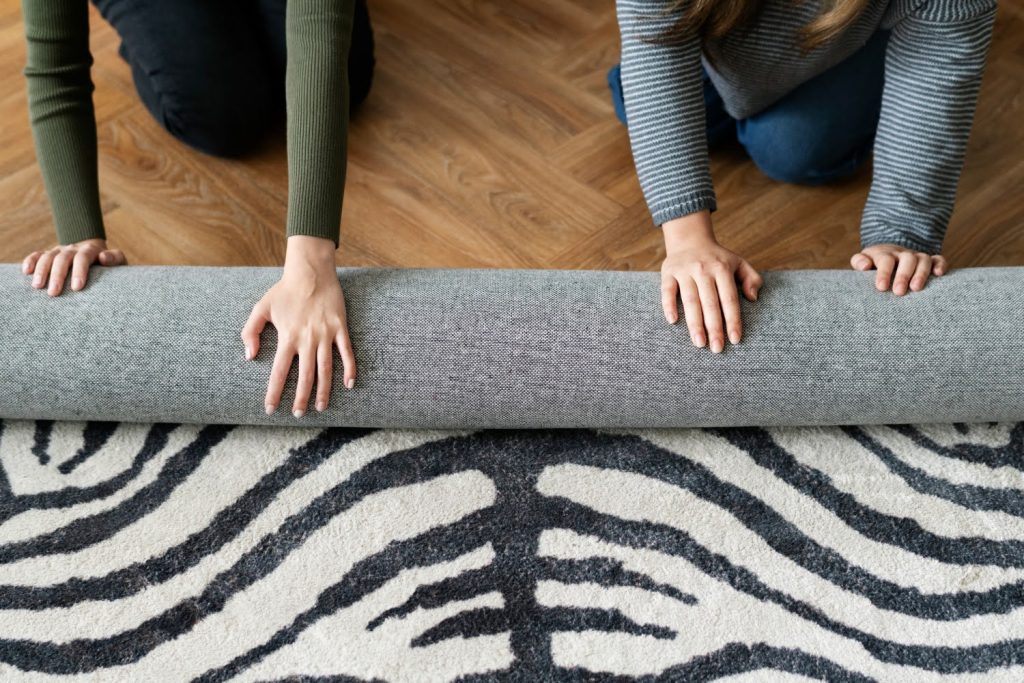
5. Wool
Wool is a natural fibre popular for its luxurious feel, exceptional durability and eco-friendliness. Wool carpets offer a premium look and feel that enhances high-end commercial spaces such as executive offices, luxury hotels and upscale retail stores.
Wool is naturally resistant to soiling and staining. It provides excellent insulation properties, helping to regulate temperature and reduce noise.
Although wool carpets can be expensive and require more maintenance than synthetic options, their longevity and timeless appeal often justify the investment.
Wool carpets are also sustainable and biodegradable, making them an environmentally responsible choice for businesses prioritising green initiatives.
Ideal Use Cases:
- Executive offices
- Luxury hotels
- High-end retail stores
6. Triexta
Triexta is a relatively new synthetic fibre known for its impressive durability, softness and stain resistance. It combines the best qualities of nylon and polyester.
Triexta carpets are highly resilient, making them ideal for high-traffic commercial areas where durability is essential.
Triexta is also known for its eco-friendly attributes. It is often produced using renewable resources, adding to its appeal for environmentally conscious businesses.
Although Triexta can be more expensive than other synthetic fibres, its combination of performance, comfort and sustainability makes it a valuable investment for commercial spaces such as family-friendly environments, offices and busy public areas.
Ideal Use Cases:
- High-traffic commercial areas
- Family-friendly commercial spaces
7. Sisal
Sisal carpet is a natural fibre derived from the agave plant. It is known for its durability and eco-friendliness. It offers a unique, rustic aesthetic that adds a natural touch to commercial spaces, making it popular in eco-conscious settings like conference rooms and boutique hotels.
Sisal carpets are highly resistant to wear and can withstand heavy foot traffic, but they are not recommended for areas prone to moisture as they can absorb liquids and stains.
Despite its rough texture, sisal provides a natural look that many businesses find appealing. It is also biodegradable and sustainable, aligning with green building practices. Regular vacuuming and occasional spot cleaning are typically sufficient to maintain sisal carpets.
Ideal Use Cases:
- Conference rooms
- Eco-conscious commercial spaces
8. Cotton
Cotton is a natural fibre prized for its softness and comfort underfoot, making it a pleasant option for light-traffic commercial areas.
Cotton carpets also offer excellent colour retention and can be dyed in vibrant shades, enhancing the aesthetic appeal of spaces like decorative rugs and lounges.
However, cotton is less durable than synthetic fibres and more susceptible to staining and wear, requiring frequent cleaning and maintenance.
Despite these drawbacks, cotton is eco-friendly and biodegradable, appealing to businesses prioritising sustainability. Its natural, cosy feel makes it a good choice for low-traffic, comfortable settings where luxury and sustainability are key considerations.
Ideal Use Cases:
- Light-traffic commercial areas
- Decorative rugs
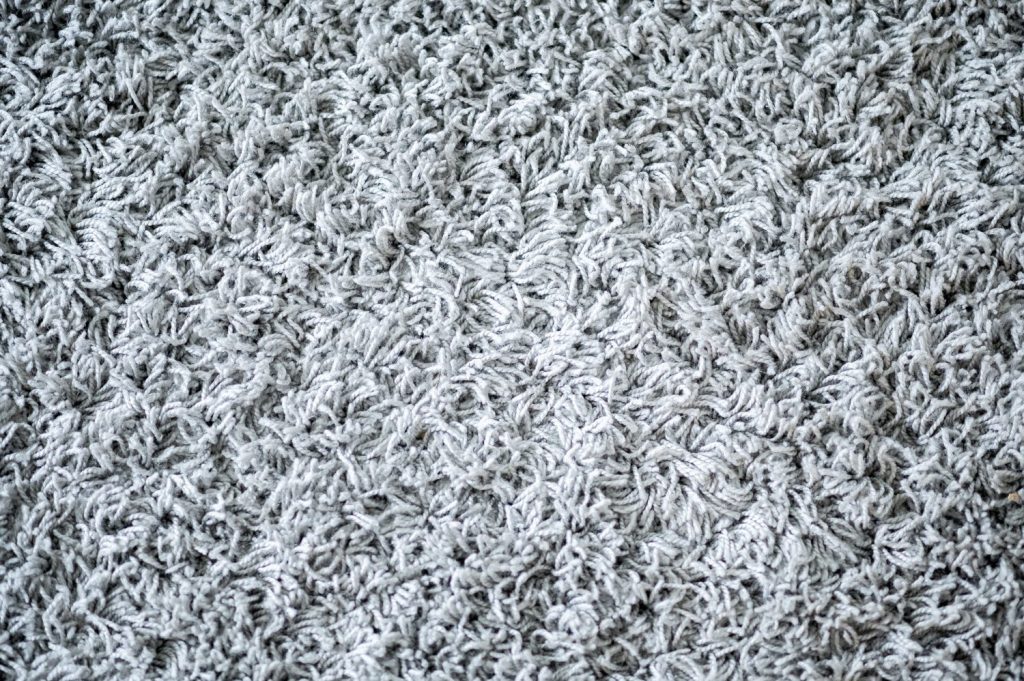
3 Types Of Carpet Piles
Understanding the different types of carpet piles is essential for selecting the right carpet for your commercial space. The pile type affects the carpet’s texture, appearance and durability, which is essential for its performance and maintenance.
Here, we explore three main types of carpet piles: loop pile, cut pile, and cut and loop pile. Each offers unique benefits and ideal use cases.
1. Loop Pile
Loop pile carpets are made by weaving loops of yarn into the carpet backing, creating a durable and resilient surface. This pile type is highly resistant to crushing and matting, making it ideal for high-traffic areas.
Loop pile carpets are known for their ability to hide dirt and footprints, maintaining a clean and tidy appearance even in busy commercial spaces.
Loop pile carpets are commonly used in offices, commercial corridors and areas where durability and easy maintenance are essential. The texture of loop pile carpets also adds a subtle, patterned look, which can enhance a space’s aesthetic.
2. Cut Pile
Cut pile carpets are created by cutting the yarn loops, resulting in a softer and plusher surface. This type of pile offers a luxurious feel underfoot and a smooth, uniform appearance.
Cut pile carpets come in various styles, such as Saxony, plush and frieze, each offering different levels of softness and texture.
They are best suited for areas where comfort and aesthetics are a priority, such as executive offices, meeting rooms and upscale retail spaces.
While cut pile carpets provide a high-end look and feel, they may require more maintenance to keep them looking their best, especially in high-traffic areas.
3. Cut And Loop Pile
Cut and loop pile carpets combine cut and looped fibres, creating a textured surface with patterns and designs. This blend offers the loop pile’s durability with the cut pile’s plush feel, making it a versatile option for various commercial settings.
The patterns in cut and loop pile carpets can help hide dirt and wear, making them a practical choice for areas with moderate foot traffic.
These carpets are often used in hotel lobbies, conference rooms and other spaces where both style and durability are important.
Cut and loop pile carpets’ unique texture and design possibilities can add a distinctive touch to any commercial interior.
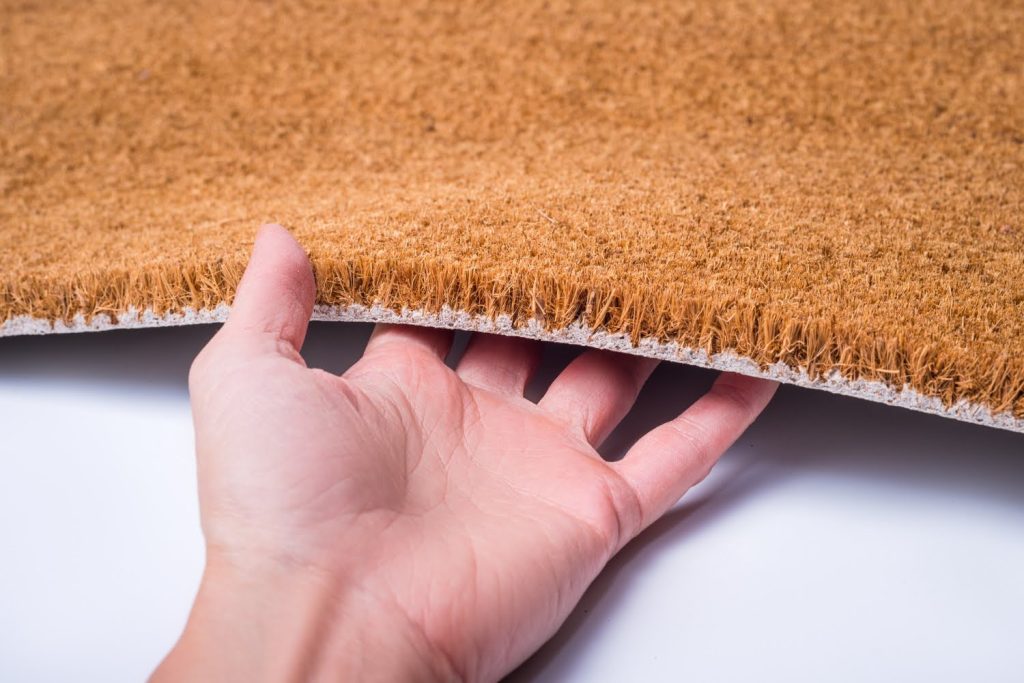
Importance Of Carpet Padding
Carpet padding, also known as underlay or cushioning, is vital in the performance and longevity of your carpet. It is the layer placed beneath the carpet, providing support, comfort and additional benefits that enhance the overall functionality of your flooring.
Here are the five main benefits of carpet paddings:
1. For Comfort
Carpet padding adds a layer of cushioning, making the carpet more comfortable to walk on. This is particularly important in commercial spaces where employees and clients spend a significant amount of time on their feet, such as offices, retail stores, hotels and healthcare facilities.
2. For Durability
The padding absorbs the impact of foot traffic, reducing stress on the carpet fibres and extending the carpet’s lifespan. It helps prevent premature wear and tear, ensuring the carpet maintains its appearance for longer.
3. For Insulation
Padding also provides thermal insulation, helping to keep the space warmer in winter and cooler in summer. This can contribute to energy efficiency and comfort in commercial environments.
4. For Noise Reduction
Carpet padding helps to reduce noise by absorbing sound, making it an excellent choice for busy commercial spaces where noise control is important, such as open-plan offices, call centres, conference rooms and hotel lobbies.
5. For Moisture Barrier
Some carpet pads come with a moisture barrier that prevents spills and stains from penetrating through to the subfloor, making cleaning and maintenance easier.
Conclusion About The Different Types Of Carpet Materials
Whether you prioritise durability, comfort, aesthetics or maintenance, knowing the characteristics of various carpet fibres and piles can help you make an informed decision.
Proper installation and regular maintenance also ensure that your carpet remains in excellent condition, providing a professional and welcoming environment.
Contact ESP Cleaning Services if you’re looking for the best commercial cleaning services or office cleaning services in Singapore. We have professional and trained commercial cleaners ready to keep your carpets in top condition.
Frequently Asked Questions About The Different Types Of Carpet Materials
What Is The Most Suitable Carpet Type For Commercial Spaces?
Nylon carpets are often the most suitable for commercial spaces due to their exceptional durability, stain resistance and ease of maintenance. They can withstand heavy foot traffic and maintain their appearance over time.
How Do I Maintain And Clean Commercial Carpets?
To maintain and clean commercial carpets, vacuum them regularly to remove dirt and debris and address spills immediately with appropriate cleaning solutions.
How Often Should Commercial Carpets Be Professionally Cleaned?
Commercial carpets should be professionally cleaned every 6 to 12 months, depending on the level of foot traffic and use. Regular professional cleaning helps maintain the carpet’s appearance and hygiene, prolonging its lifespan.
What Methods Are Used For Commercial Carpet Cleaning?
Several methods are used for commercial carpet cleaning, including hot water extraction (steam cleaning), dry cleaning, encapsulation and bonnet cleaning. Hot water extraction is the most common method, using hot water and cleaning agents to remove dirt and stains.
Dry cleaning uses low-moisture techniques, which are ideal for quick drying times. Encapsulation involves applying a cleaning agent that crystallises dirt particles, which are vacuumed away. Bonnet cleaning uses a rotating pad soaked in a cleaning solution to clean the carpet’s surface.

